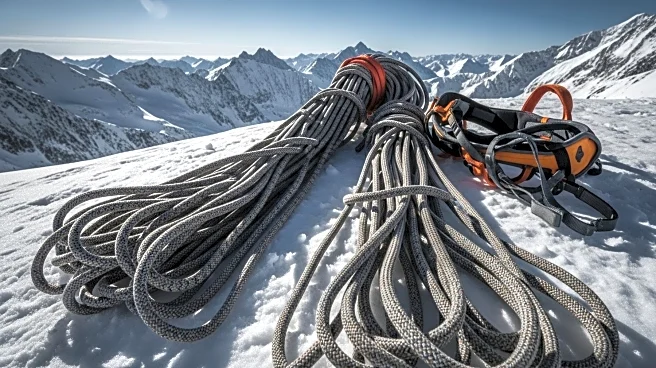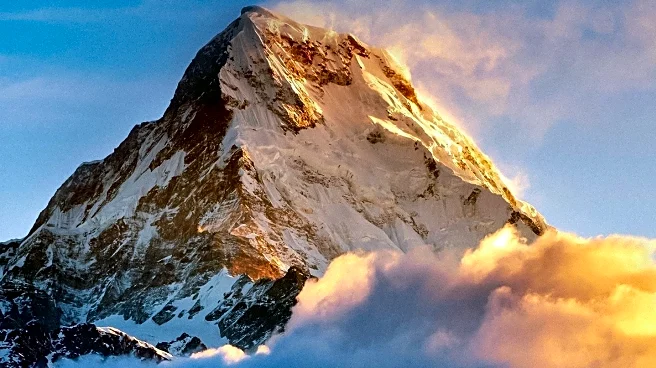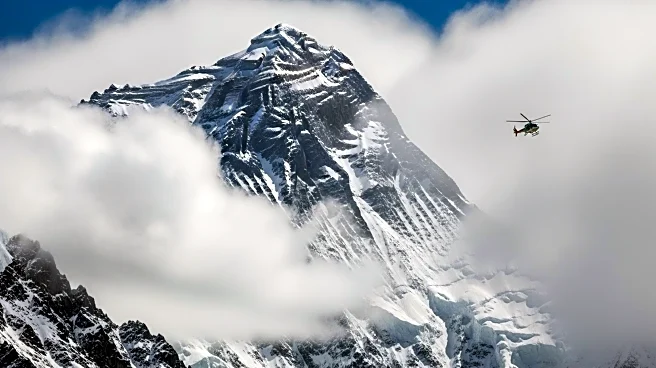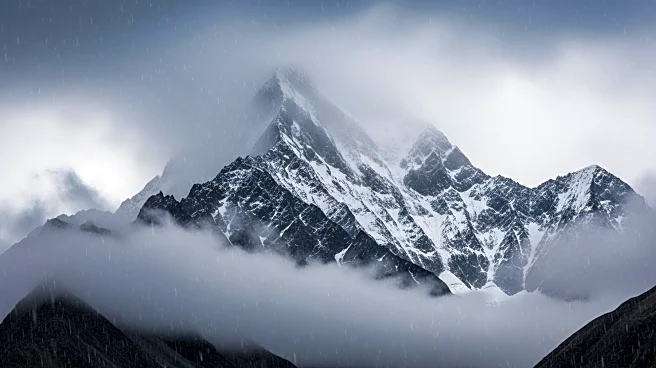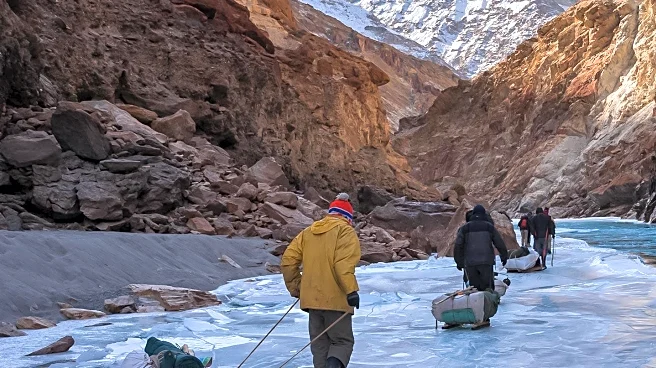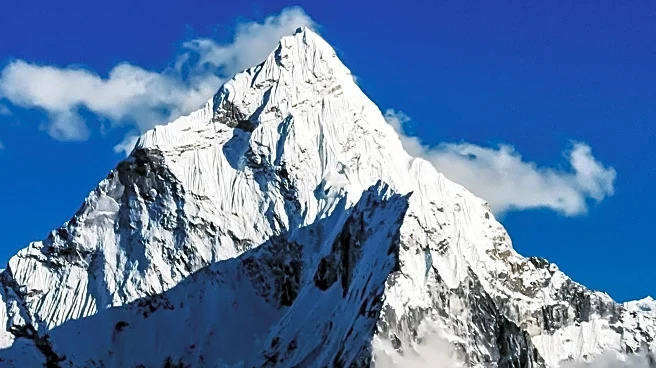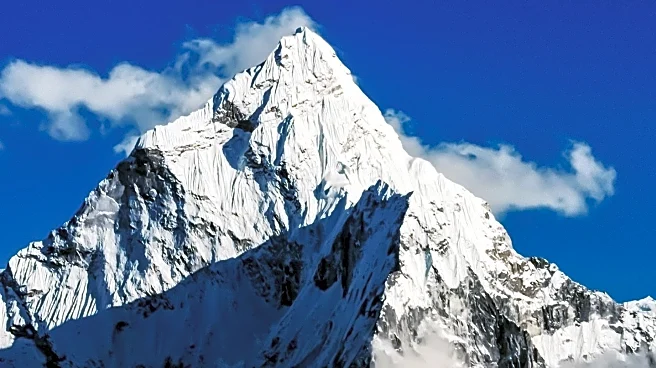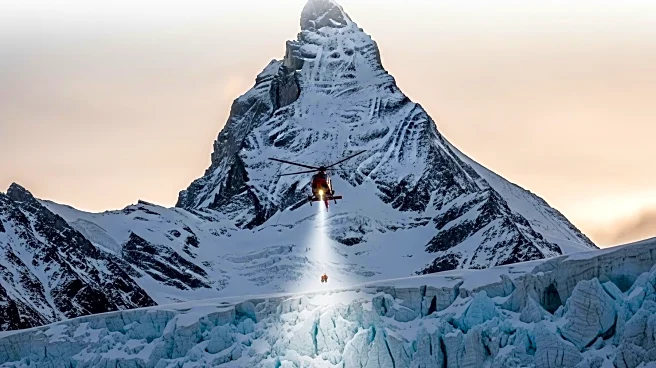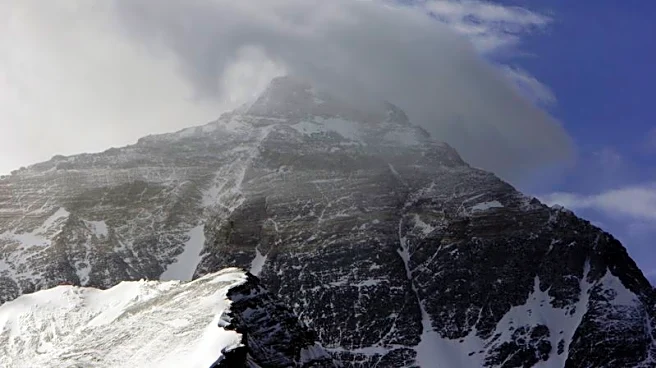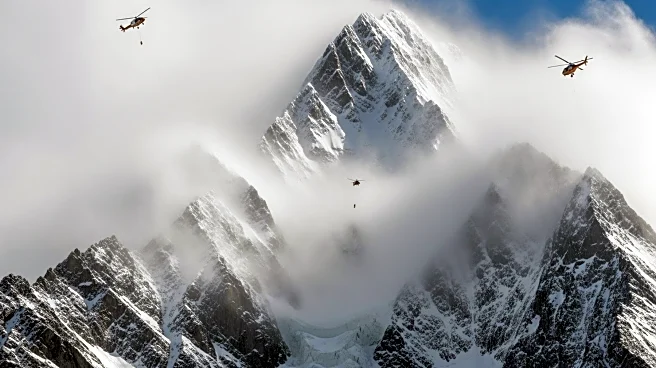What's Happening?
Hundreds of trekkers have been rescued from the eastern face of Mount Everest in Tibet following a severe blizzard. The heavy snowfall, which began on Friday evening, trapped nearly 1,000 people in the remote valley of Karma, a popular trekking destination during China's National Day holiday. As of Sunday, 350 trekkers had been safely guided to the township of Qudang, with contact established with over 200 others. Local villagers and rescue teams have been working to clear snow-blocked access routes. The situation remains critical as efforts continue to bring the remaining trekkers to safety.
Why It's Important?
The rescue operation highlights the challenges and risks associated with trekking in high-altitude regions like the Himalayas, especially during adverse weather conditions. The incident underscores the importance of preparedness and effective emergency response in ensuring the safety of tourists and trekkers. The disruption also affects the local economy, which relies heavily on tourism, particularly during peak seasons. The situation in Tibet is compounded by severe weather in neighboring Nepal, where landslides and flash floods have resulted in significant casualties and infrastructure damage.
What's Next?
Rescue operations are ongoing, with efforts focused on ensuring the safe return of all trekkers. Authorities have suspended ticket sales and entry to the Everest Scenic Area to prevent further incidents. The local government and rescue teams are likely to continue monitoring weather conditions closely and may implement additional safety measures for future trekking activities. The broader region may also see increased scrutiny and potential policy changes regarding tourist safety and emergency preparedness.
Beyond the Headlines
The incident raises questions about the impact of climate change on weather patterns in the Himalayas, potentially leading to more frequent and severe weather events. This could have long-term implications for tourism and local communities dependent on this industry. Additionally, the event may prompt discussions on the need for improved infrastructure and communication systems in remote areas to better handle emergencies.

